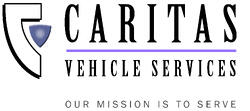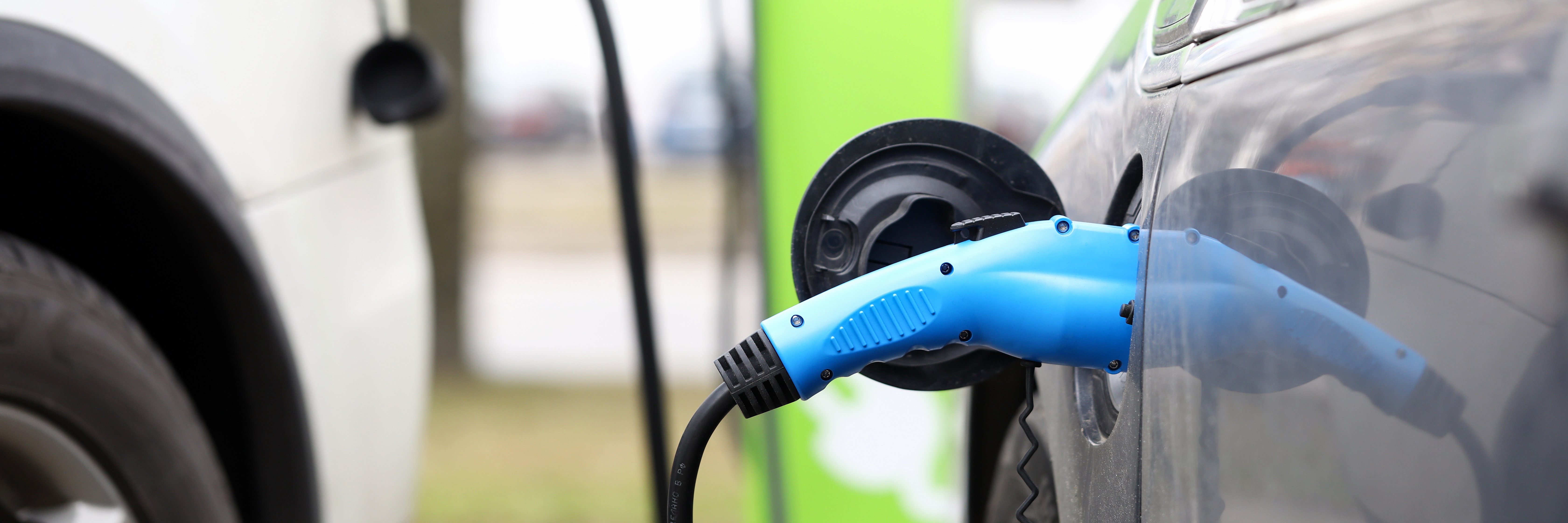
Battery-powered electric cars, otherwise known as electric vehicles or EV’s, are becoming ever more common on U.S. roads and highways. According to J.D. Power, sales of EV’s rose from 3.2% [of the auto market] in 2021 to 5.8% in 2022, a two-thirds increase that is only expected to continue as more vehicle body types and public charging stations become available.
Driving the growth trend in electric vehicle ownership, President Biden’s Bipartisan Infrastructure Law, enacted in November 2021, allocated $5 billion in federal funding to build a “national charging network.” So far, there hasn’t been one, unified network of evenly distributed public charging stations in the mainland United States. In fact, the current public charging infrastructure is distributed heavily in just a few states, leaving much room for growth in rural channels. Biden’s “BIL” is therefore especially focused on expanding public charging infrastructure in rural and underserved areas, where charging stations are fewer and farther between.
Even so, it has never been more possible for the driver of an electric vehicle to navigate the country’s roadways using a new, electrified mode of travel that is cost-efficient and energy-wise.
We have boiled public EV charging down to a few basic points that we hope will make your journeys even smoother.
Charging levels
With an EV, you may never need to vie for pumps at a crowded gas station ever again. Instead, when charging in public places, electric cars use electric vehicle service equipment (EVSE), otherwise known as “charging stations.”
To charge an EV, you use a connector cable. Connector cables have one end that plugs into either a wall outlet or charging station and another end that plugs into your EV’s charging port. The cables convert AC energy into usable DC energy that is stored in your EV’s lithium-ion battery (except for one type of station which draws DC power straight from the power grid and skips the conversion step, which we describe in detail below).
There are three levels of EV charging: Level 1, Level 2 and DC Fast Charging (DCFC), or Level 3. Each succeeding “level” uses a higher voltage to decrease the kilowatt hours needed to charge your EV battery to 80 or 100%.
Level 1
Level 1 charging uses a connector called the SAE J1772 to plug into a standard 120-V outlet. Because it is the slowest way to charge an EV, it is best utilized as a charging strategy if done consistently at your home each night.
No public charging stations employ Level 1, simply because it would be inefficient for public use -- according to J.D. Power, Level 1 charging only adds 2-5 miles of range to your EV per hour. This means it takes over two days to fully charge an electric car’s battery. Granted, it would only take 5-6 hours to charge the battery of a PHEV, also known as a plug-in hybrid electric vehicle. But that’s because PHEV’s rely only partially on their batteries, using conventional fuel to power the engine when their charge runs out.
To determine Level 1 charging times, look up your EV’s range. “Range” in this instance refers to how far your EV will go on a battery that is 100% charged. EV’s all have their own unique range that comes with a full battery charge, so it is important to research the EPA-estimated range of any EV you’re looking to buy. This article from CarMax.com recommends that you always strive for a range that is equal to your daily commute times three.
To draw a charge from a 120-V outlet, Level 1 charging uses a J1772 cable plug. The J1227 connector has been formally adopted for charging Levels 1 & 2 in North America by the Society of Automotive Engineers (SAE). Officially called the SAE J1772, these connectors are typically provided free of charge with the purchase or lease of an electric car. They usually rest in a storage compartment in the trunk, next to your spare tire.
Level 2
Level 2 charging is the most common charging level found at public stations. It is not recommended for long-distance travel, or road trips, unless you know you’re going to be staying overnight at a hotel that has a functioning charging station (more about locating public charging stations below).
Because most public stations are Level 2, it is a dependable charging strategy while traveling “around town.” Level 2 chargers add about 24 miles of range per hour, which means that it can take up to 12 hours to charge an EV battery to 100%.
All electric vehicles in the U.S.—except Tesla’s—use the SAE J1772 for Level 2 charging, the same connector that comes with most EV’s and is used for Level 1. But, instead of removing the stowaway connector from your trunk and plugging it into a wall outlet, you will take the J1772 plug from its holster on an equipment service box (EVSE) and plug it into your EV’s charging port.
For at-home Level 2 charging, you will need an accessible 240-V outlet—the kind which is used to power a washer or dryer. Then, you’ll have to install a Level 2 EVSE box that will plug into the outlet and hang on the wall. An at-home Level 2 box usually comes with two J1772 connector plugs attached and ready to use, resembling gas pumps in appearance and function.
Level 3
Level 3 charging isn’t actually called “Level 3,” although it is the final—and swiftest—option for EV charging. Level 3 is more commonly known as “DC Fast Charging,” or DCFC for short.
DCFC is considered the most useful for road trips because its advanced chargers can fill an EV battery to 80% in roughly one hour. But DCFC stations are the least common in public locations and cost more money than Level 2 charging, so it is even more important to know where they are on a map and how much range you’ll need to get where you’re going.
DCFC stations use different connectors than Levels 1 & 2, with the most common being the SAE Combined Charging System (CCS for short). The CCS plug resembles the SAE J1772 with the addition of two large pins, and is also commonly referred to as the J1772 CCS Combo Connector. The same charging port that you plug the J1772 into will support a CCS Combo Connector, with a few exceptions based on vehicle make. For instance, if you drive a Tesla, a Nissan Leaf or a Mitsubishi EV, you will use alternative connectors for DCFC.
Tesla’s DCFC plugs are called Tesla Superchargers, and are provided at most public Tesla charging stations. Nissan and Mitsubishi use another type of fast charging plug called the CHAdeMO connector, for which their cars have an additional charging port.
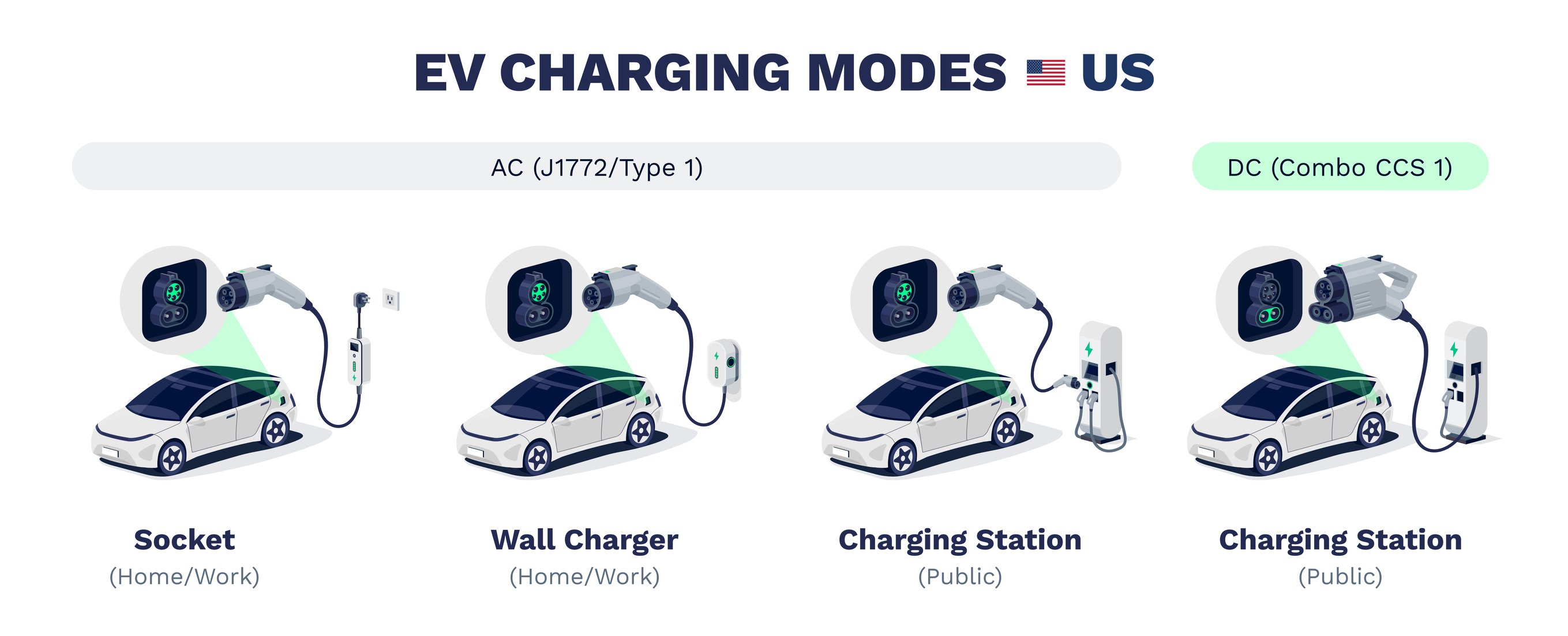
Note: It’s never “necessary” to charge your EV battery fully. A partial charge is fine, and is often preferred, because the charging rate slows down after the battery reaches 80%. This means it can take as long or longer to charge from 80% to 100% than it takes to charge from 0% to 80%.
Charging an EV
If you’re at a public charging station, or have your own charging unit installed at home, you will simply take the connector plug from its “holster” on the EVSE box much like you would a gas pump, and insert it with the prongs aligned into your car’s charging port.
Click here to view a video tutorial on using EVSE
How to locate public EV charging stations
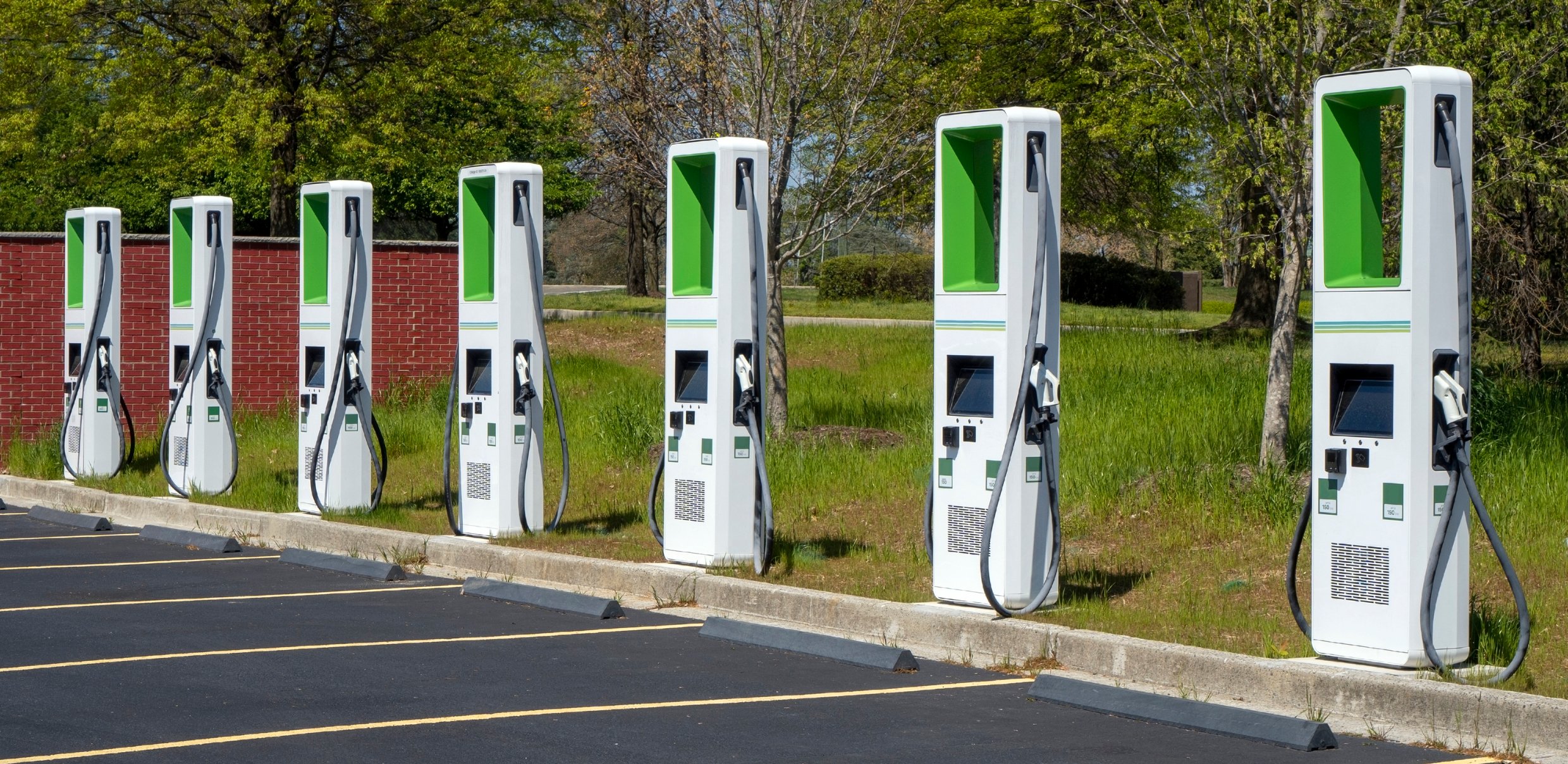
As we’ve already mentioned, Level 2 public charging stations are the most common. They are often located in populated areas, and can be found at hotels, supermarkets like Whole Foods, malls, public parking lots, and apartment complexes, among other places. But, if you’re in a hurry, you may want to know how to find a DCFC station. Thankfully, there are smartphone apps and online map tools that you can use to plan your charging strategy.
Phone apps work better for locating public charging spots “around town,” and there are a few apps to choose from. The two most downloaded in the app marketplace are PlugShare and ChargePoint. While ChargePoint functions as a locator and its own charging network (more on charging networks below), PlugShare is an independent, third-party app, and has the highest user satisfaction rating out of all the available charging station locators.
To plan your journeys ahead of time, use the trip planner in your chosen phone app. Simply enter your starting location and destination and the app will display all charging stations along your route. They also show additional information about each charging spot, such as whether a given location has a Level 1 outlet, Level 2 public charger, or DCFC station. The apps are especially helpful because they specify whether a location's public charging station(s) are in use, and whether there are any kWh left to draw a charge from (believe it or not, charging stations have to recharge, too!).
Needless to say, phone apps are handy when on-the-go. However, if you're going to be driving through areas with little to no cell service, it may be prudent to plot out your route on a computer beforehand and have it printed out (remember Mapquest?). To assist you with more comprehensive road trip preparedness, The U.S. Department of Energy's Alternative Fuels Data Center has the most detailed national map of public charging stations. Find it here.
When planning your stops, it is of vital importance to have multiple charging locations plotted along each strip of road, and that the distances in between don’t exceed your EV’s EPA-estimated range. Your EV will display a range estimate on your dashboard, but keep in mind that it is just an estimate. Knowing your range is especially important in cold weather. Temperatures under 50 degrees Fahrenheit can lower an EV’s range by as much as 10 to 36%.
Other factors affecting EV range:
- Using the AC: Never put the AC on full-blast unless it’s absolutely necessary. In general, expect to make it further in mild weather conditions.
- Driving habits: Over-acceleration and abrupt braking are both hard on your EV’s battery. But, the good news is that your EV can actually recharge its battery while you brake in a process originally designed for PHEV’s called regenerative braking. The trick is you must brake smoothly for it to work properly.
- Using the highway: Expect your EV range to deplete at a faster rate while on the interstate.
How to pay at public charging stations
According to this article from U.S. News, the U.S. Department of Energy's Alternative Fuels Data Center reports that there are currently 50,000 public charging stations in the U.S. The good news is that, of these 50,000 stations, there are quite a few free Level 2 public charging stations.
To find complimentary Level 2 public chargers, use the filter tool on your PlugShare (or alternate) app to search for free stations.
Note: While DCFC stations are the fastest charging option, they always cost money and charge more per kilowatt-hour (kWh) than public Level 2 chargers.
But how do you pay at public charging stations, and how is EV charging priced?
To charge your EV using a Level 2 or DCFC station, you will either use a credit/debit card, or your phone. Payment method differs per station because there are more than a few private charging network companies, and while some prices are uniform and others are free, many major networks let the location owners (such as a third-party storefront) determine charging prices.
Some charging networks require you to sign up for a network membership to use their stations. ChargePoint, for example, is one of the largest domestic charging networks. They own over half of the public stations in the nation, with 27,000 public chargers currently in operation. To sign up for a membership with Chargepoint is free, although you will still be providing payment at certain charging stations. Simply download their app and link your credit or debit card. Then, use your phone to pay at the station.
To determine what memberships you might need, use the map that we mentioned above to view what networks operate the public chargers along your designated route(s). Then, look up whether those service providers (networks) require a membership and phone app to use their stations.
The U.S. Department of Energy's Alternative Fuels Data Center map shows all the public charging stations in the continental U.S. (Courtesy of U.S. Department of Energy).
As far as cost, public charging is priced by the kilowatt-hour (kWh). This means you will be charged for the total amount of energy (in kWh) that is transferred to your EV battery by the time you unplug. Much like gas stations, your price per kilowatt-hour (kWh) will differ at each public charger—even those within the same network. But either way, according to Kelley Blue Book, it generally costs less than five dollars to add roughly 100 miles of range to your EV. Considering a Toyota Camry gets 600 miles on a full tank of gas, and it takes just over 40 dollars to fill its tank, you’re going to be saving at least a dollar for every mile you drive in an EV. And we all know how dollars like to add up.
Moving forward…
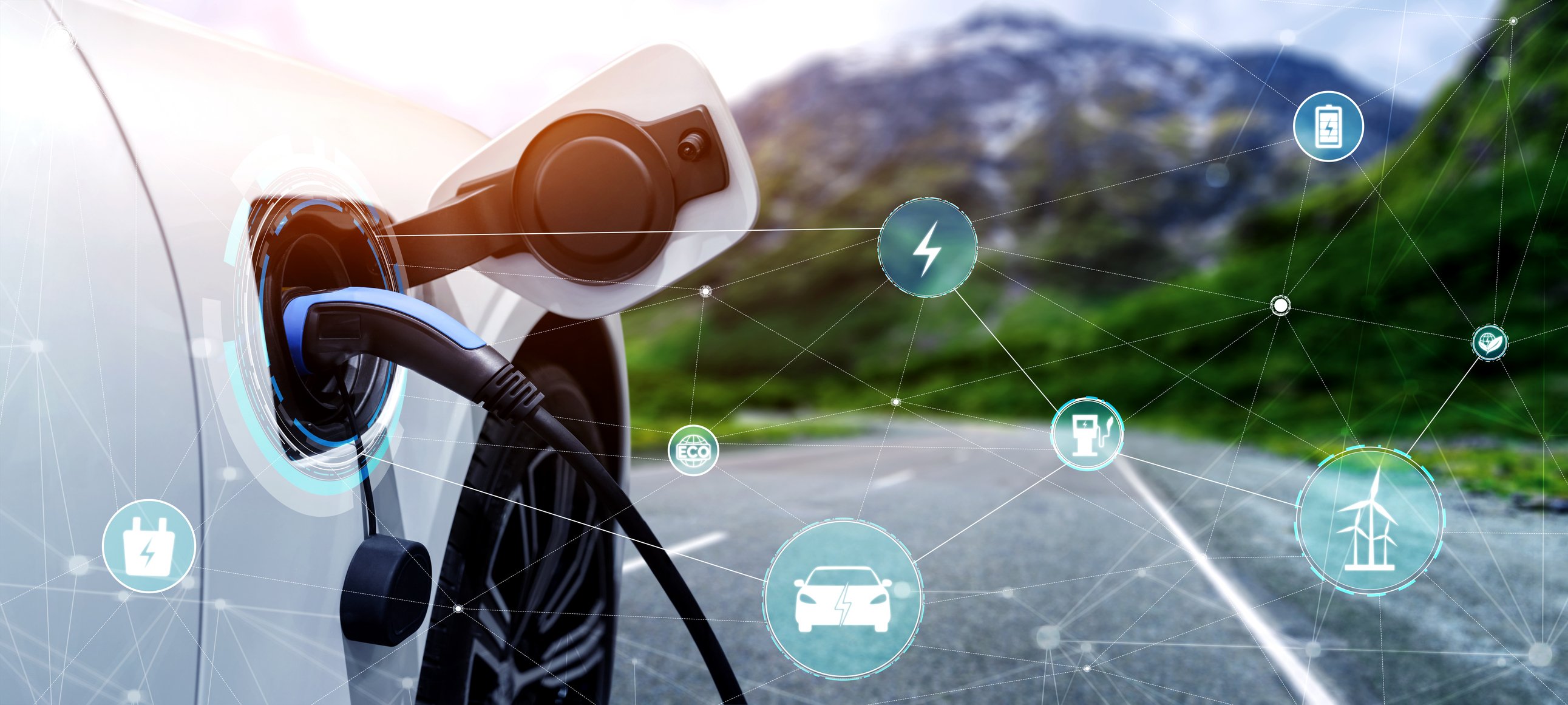
For more information on EV’s and public EV charging, or to learn how you can integrate an EV into your fleet, please reach out to Caritas Vehicle Services by clicking here.
Or, to learn more abut what you can do to "green" your fleet, read our e-book!
